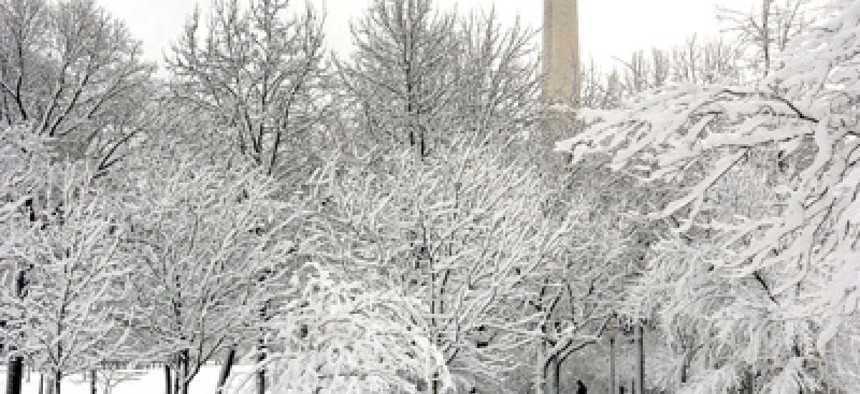
Mike Theiler/Newscom
OPM unveils new emergency operating statuses
Policy comes in response to several unusual weather events during the past year, including a January midday storm that left many commuters stranded.
The Office of Personnel Management will have more options this winter when deciding agency operating statuses during storms or other emergencies.
OPM Director John Berry unveiled three new possible responses to severe conditions: staggered early departure with a final departure time, immediate departure and shelter in place.
The agency in November announced it would change its guidelines to better address events such as the midday snow and ice storm last January that left thousands of commuters stranded for hours.
OPM consulted with human resources specialists, chief human capital officers, representatives from national labor organizations and the Federal Emergency Management Agency to develop the options. It also conducted its own review of the January storm, as well as Hurricane Irene in September and the 5.8 magnitude earthquake that took the Washington region by surprise in August.
Berry said OPM might not end up using all the new operating statuses frequently or on a governmentwide basis. Even so, the options will be available for individual agencies with specific emergency circumstances, including tornadoes, flooding and biological contaminants.
"Part of this is a public awareness to get people thinking about what they would do," Berry said. "The safest choice may not be to get in your car and run."
Early leave, with staggered departure times and final departure deadline provisions, was designed to get employees out of their buildings and the city in an effort to avoid commuter congestion. The second option, immediate departure, would require all employees to leave right away. Although it's included in OPM's options, immediate departure is meant for use by individual agencies, Berry said. The shelter-in-place option also is meant largely for use by individual agencies. If employees did not follow the final departure instructions, then they would be required to stay in the building.
Berry predicted that some might accuse OPM of overreacting with the new operating statuses. "This may create an embarrassment, but safety first is the decision here," he said.
The National Weather Service also announced its winter forecast Thursday, as winter weather might be the likeliest emergency scenario in the coming months. While it's difficult to predict specifics, Steve Zubrick, NWS' science operations officer, said the Washington area should expect slightly higher than average temperatures and conditions, but be aware that a snow storm could occur. Icing and sleeting are also possible, Zubrick said, but mixed precipitation is difficult to predict more than two weeks in advance.







